Chemical carriers
Filter :
Fecha de publicación
Tema
Idioma
Tipo de contenido
Colección

Recueil IBC
Recueil international de règles relatives à la construction et à l’équipement des navires transportant des produits chimiques dangereux en vrac
L’objectif du Recueil international de règles relatives à la construction et à l’équipement des navires transportant des produits chimiques dangereux en vrac (Recueil IBC) a pour objet d’offrir des normes internationales pour la sécurité du transport maritime en vrac des produits chimiques dangereux et des substances liquides nocives énumérés au chapitre 17.
Il prescrit des normes de conception et de construction des navires utilisés pour un tel transport quelle qu’en soit la jauge ainsi que le matériel dont ces navires doivent être équipés afin de réduire au minimum les risques auxquels sont exposés le navire son équipage et l’environnement compte tenu de la nature des produits transportés.
La présente édition du Recueil intègre un certain nombre d’amendements qui sont entrés en vigueur depuis sa dernière publication en 2016 notamment :
- les résolutions MEPC.302(72) et MSC.440(99) modifiant le modèle de Certificat international d’aptitude au transport de produits chimiques dangereux en vrac qui sont entrées en vigueur le 1er janvier 2020; et
- les résolutions MEPC.318(74) et MSC.460(101) modifiant les chapitres 1 15 16 17 18 19 et 21 y compris une révision complète des informations sur les produits figurant aux chapitres 17 et 18 qui entrent en vigueur le 1er janvier 2021.
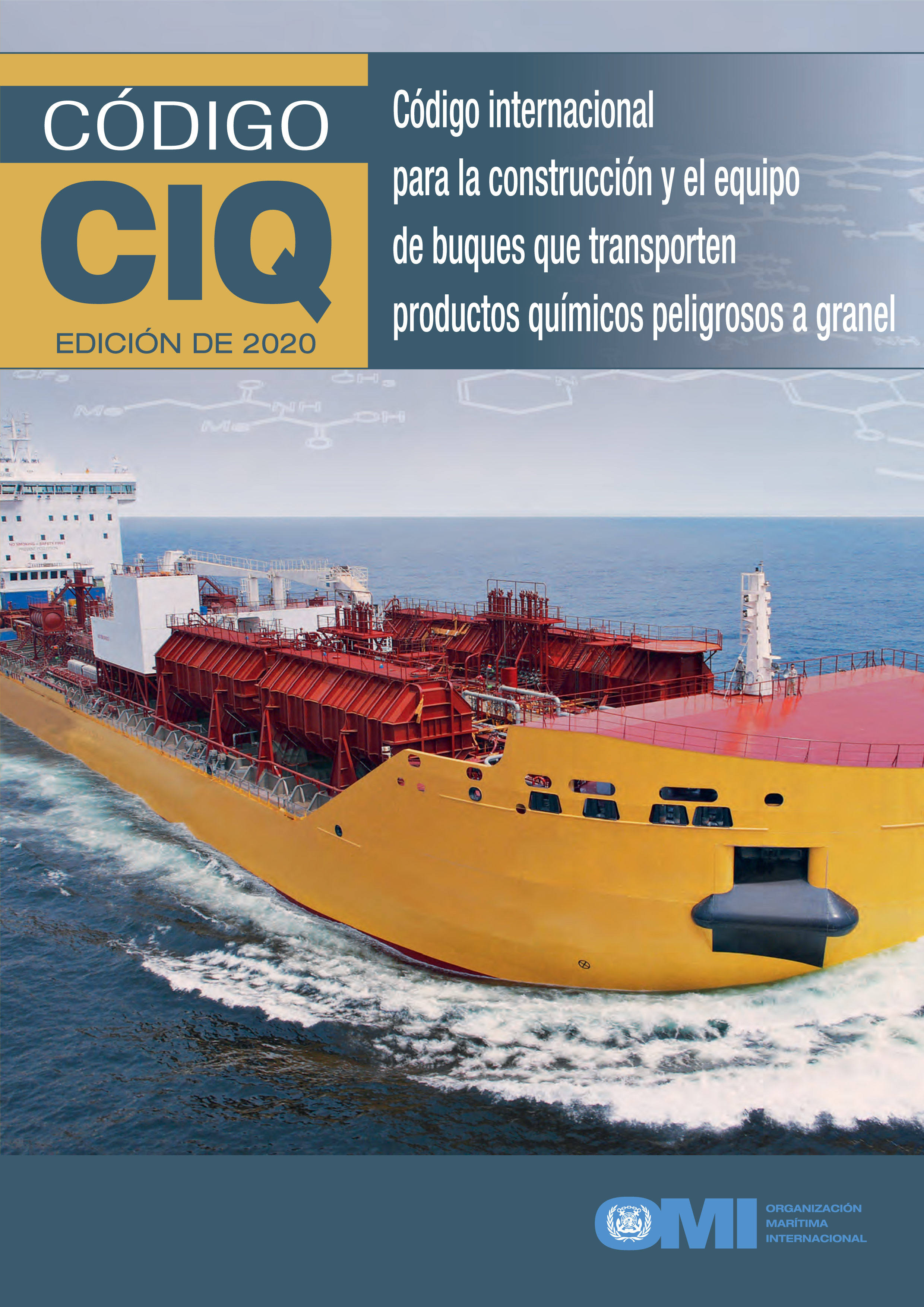
Código CIQ
Código Internacional para la Construcción y el Equipo de Buques que Transporten Productos Químicos Peligrosos a Granel
The purpose of the International Code for the Construction and Equipment of Ships Carrying Dangerous Chemicals in Bulk (IBC Code) is to provide an international standard for the safe carriage in bulk by sea of dangerous chemicals and noxious liquid substances listed in chapter 17 of the Code. The Code prescribes the design and construction standards of ships regardless of tonnage involved in such carriage and the equipment they shall carry to minimize the risk to the ship its crew and the environment having regard to the nature of the products involved. This edition of the Code incorporates a number of amendments which have entered into force since it was last published in 2016 including:
- resolutions MEPC.302(72) and MSC.440(99) amending the model form of International Certificate of Fitness for the Carriage of Dangerous Chemicals in Bulk which entered into force on 1 January 2020; and• resolutions MEPC.318(74) and MSC.460(101) amending chapters 1 15 16 17 18 19 and 21 including a complete revision of the product information set out in chapters 17 and 18 which enter into force on 1 January 2021.
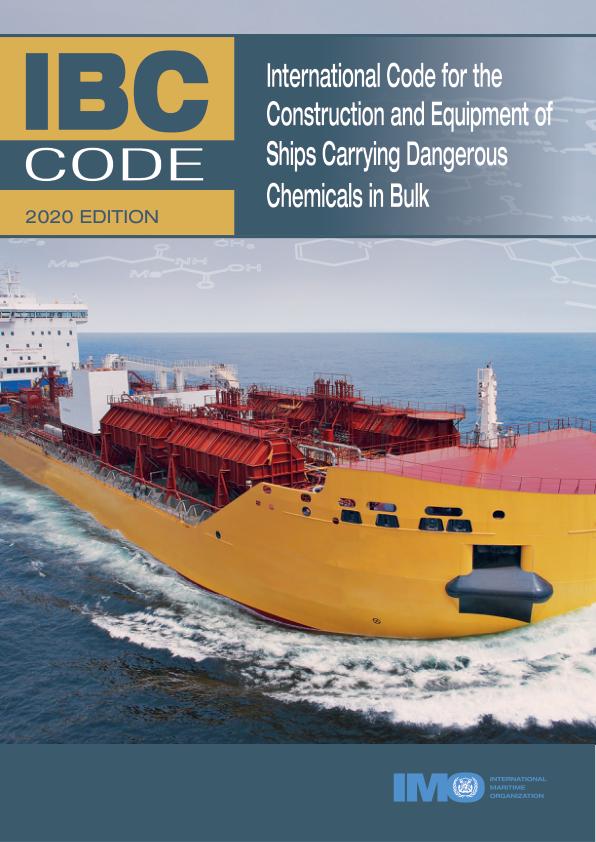
IBC Code
International Code for the Construction and Equipment of Ships Carrying Dangerous Chemicals in Bulk
The purpose of the International Code for the Construction and Equipment of Ships Carrying Dangerous Chemicals in Bulk (IBC Code) is to provide an international standard for the safe carriage in bulk by sea of dangerous chemicals and noxious liquid substances listed in chapter 17 of the Code.
The Code prescribes the design and construction standards of ships regardless of tonnage involved in such carriage and the equipment they shall carry to minimize the risk to the ship its crew and the environment having regard to the nature of the products involved. This edition of the Code incorporates a number of amendments which have entered into force since it was last published in 2016 including:
- resolutions MEPC.302(72) and MSC.440(99) amending the model form of International Certificate of Fitness for the Carriage of Dangerous Chemicals in Bulk which entered into force on 1 January 2020; and
- resolutions MEPC.318(74) and MSC.460(101) amending chapters 1 15 16 17 18 19 and 21 including a complete revision of the product information set out in chapters 17 and 18 which enter into force on 1 January 2021.
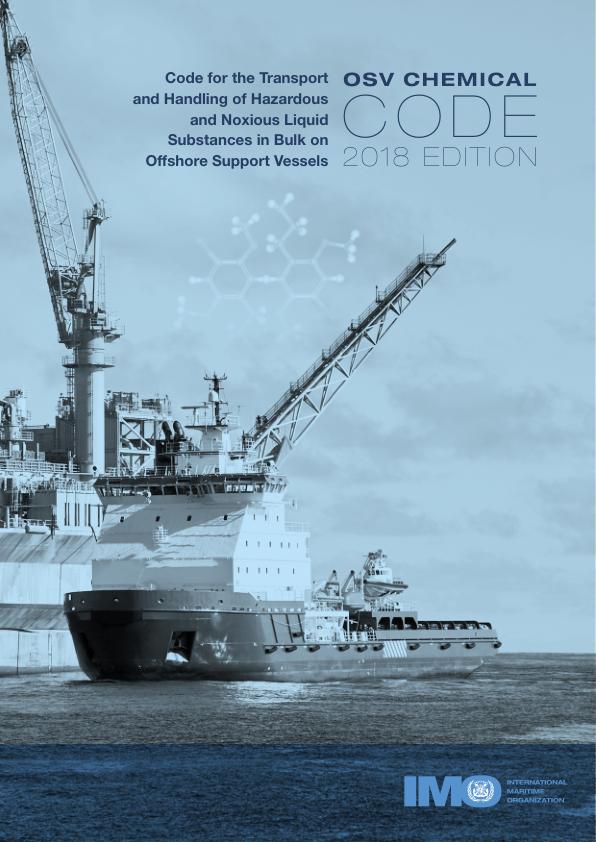
OSV Chemical Code
Code for the Transport and Handling of Hazardous and Noxious Liquid Substances in Bulk on Offshore Support Vessels
The Code for the Transport and Handling of Hazardous and Noxious Liquid Substances in Bulk on Offshore Support Vessels (OSV Chemical Code) has been developed for the design construction and operation of offshore support vessels (OSVs) which transport hazardous and noxious liquid substances in bulk for the servicing and resupplying of offshore platforms Mobile offshore drilling units and other offshore installations including those employed in the search for and recovery of hydrocarbons from the seabed.
The basic philosophy of the present Code is to apply standards contained in the Code and the International Code for the Construction and Equipment of Ships Carrying Dangerous Chemicals in Bulk (IBC Code) and in the International Code for the Construction and Equipment of Ships Carrying Liquefied Gases in Bulk (IGC Code) to the extent that is practicable and reasonable taking into account the unique design features and service characteristics of OSVs.
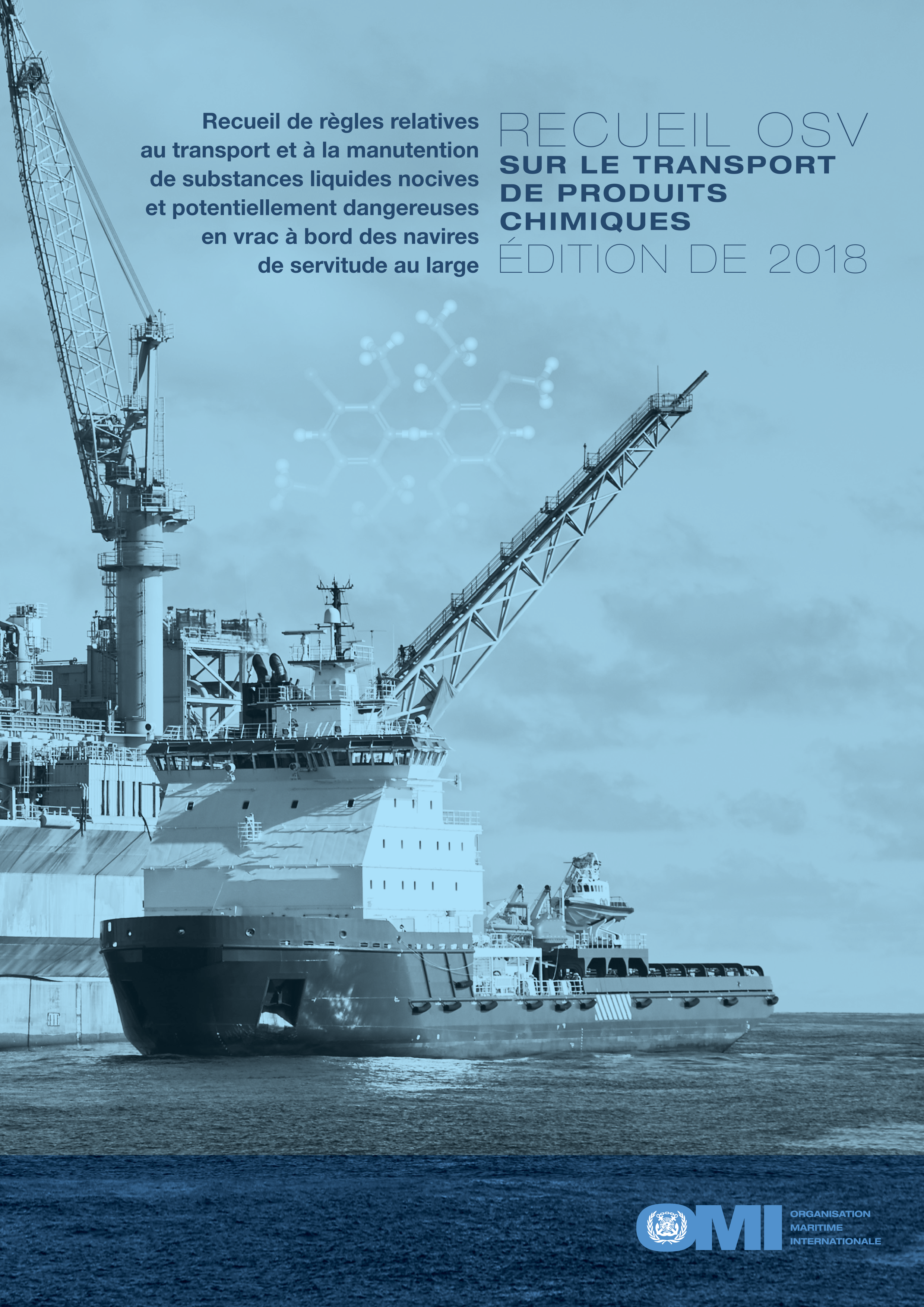
Recueil OSV sur le transport de produits chimiques
Recueil de règles relatives au transport et à la manutention de substances liquides nocives et potentiellement dangereuses en vrac à bord des navires de servitude au large
Le Recueil de règles relatives au transport et à la manutention de substances liquides nocives et potentiellement dangereuses en vrac à bord des navires de servitude au large (Recueil OSV sur le transport de produits chimiques) a été élaboré pour la conception la construction et l’exploitation des navires de servitude au large qui transportent des substances liquides nocives et potentiellement dangereuses en vrac aux fins de l’entretien et du réapprovisionnement des plates-formes au large des unités mobiles de forage au large et d’autres installations au large y compris celles qui sont utilisées dans la recherche et l’extraction d’hydrocarbures du sous-sol marin.
L’idée fondamentale du présent Recueil est d’appliquer les normes du Recueil international de règles relatives à la construction et à l’équipement des navires transportant des produits chimiques dangereux en vrac (Recueil IBC) et du Recueil international de règles relatives à la construction et à l’équipement des navires transportant des gaz liquéfiés en vrac (Recueil IGC) aux navires de servitude au large dans la mesure où cela est possible dans la pratique et raisonnable compte tenu des caractéristiques particulières de leur conception et du service qu’ils assurent.
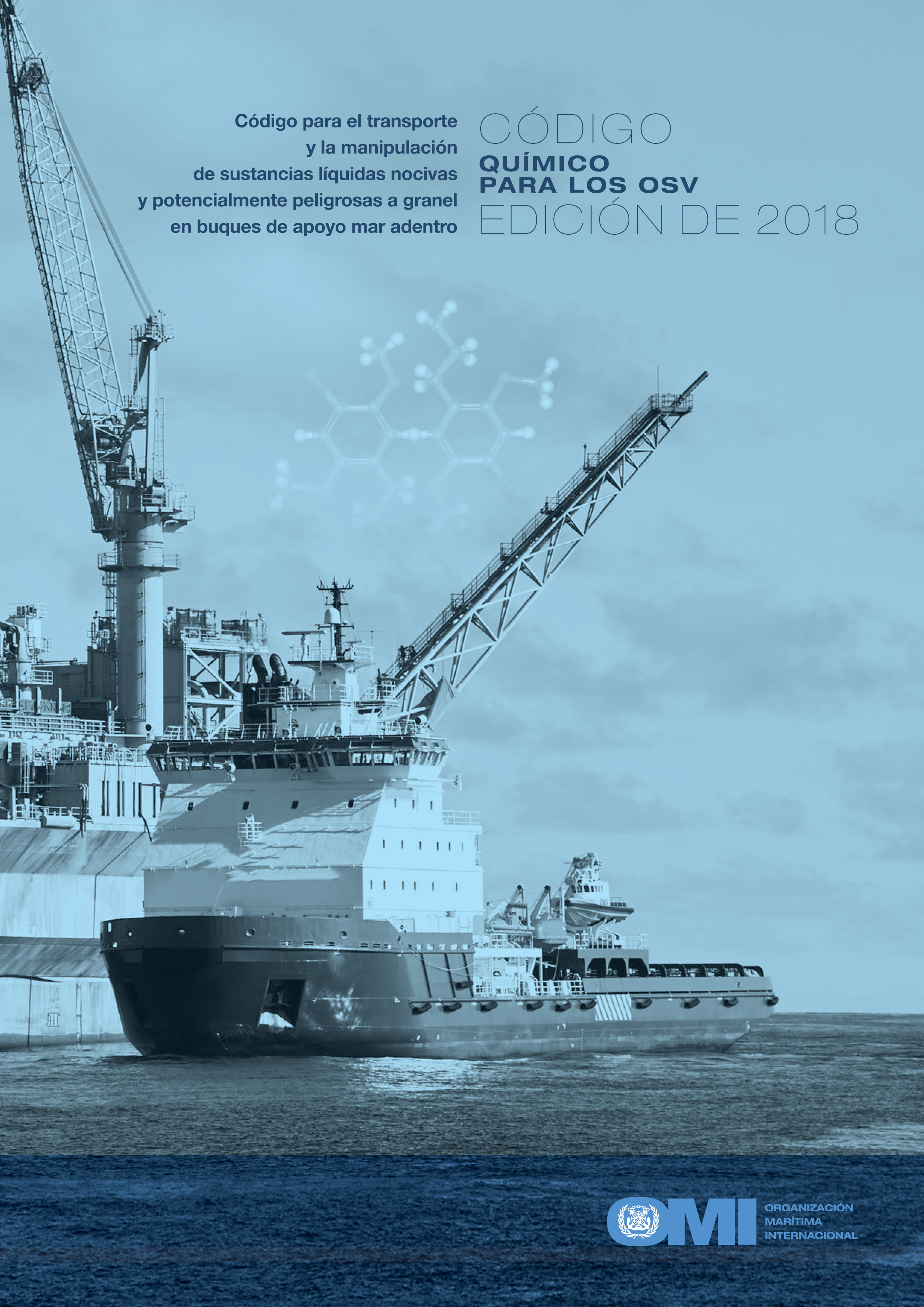
Código Químico para los OSV
Código para el Transporte y la Manipulación de Sustancias Líquidas Nocivas y Potencialmente Peligrosas a Granel en Buques de Apoyo Mar Adentro
El Código para el transporte y la manipulación de sustancias líquidas nocivas y potencialmente peligrosas a granel en buques de apoyo mar adentro (Código químico para los OSV) ha sido elaborado para el proyecto la construcción y la utilización de buques de apoyo mar adentro (OSV) que transporten sustancias líquidas nocivas y potencialmente peligrosas a granel para el mantenimiento y el aprovisionamiento de las plataformas unidades móviles de perforación y otras instalaciones mar adentro incluidas las utilizadas en la prospección y la extracción de hidrocarburos de los fondos marinos.
EI concepto fundamental del presente código es la aplicación de normas que figuran en el Código internacional para la construcción y el equipo de buques que transporten productos químicos peligrosos a granel (Código CIQ) y el Código internacional para la construcción y el equipo de buques que transporten gases licuados a granel (Código CIG) en la medida en que sea factible y razonable teniendo en cuenta el carácter particular del proyecto y las características de servicio de los OSV.
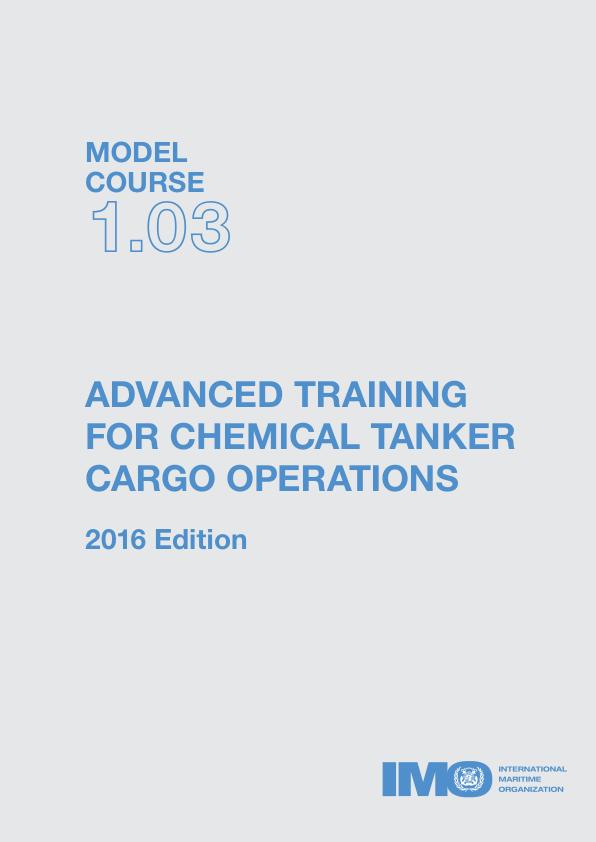
Advanced Training for Chemical Tanker Cargo Operations
Model course 1.03
This course provides training for masters chief engineer officers chief mates second engineer officers and any person with immediate responsibility for loading unloading care in transit handling of cargo tank cleaning or other cargo-related operations on chemical tankers. The course takes full account of section A-V/1-1 of the STCW Code.
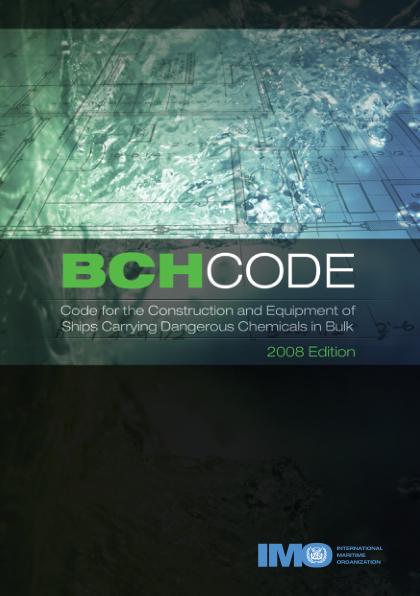
BCH Code
Code for the Construction and Equipment of Ships Carrying Dangerous Chemicals in Bulk
The Code for the Construction and Equipment of Ships Carrying Dangerous Chemicals in Bulk (BCH Code) presents amendments to the Code to reflect the 2007 revision of MARPOL Annex II and other amendments related to:
- Survey and certification
- Materials of construction
- Fire protection
- Personnel protection
- Certificate of fitness for the carriage of dangerous chemicals in bulk.
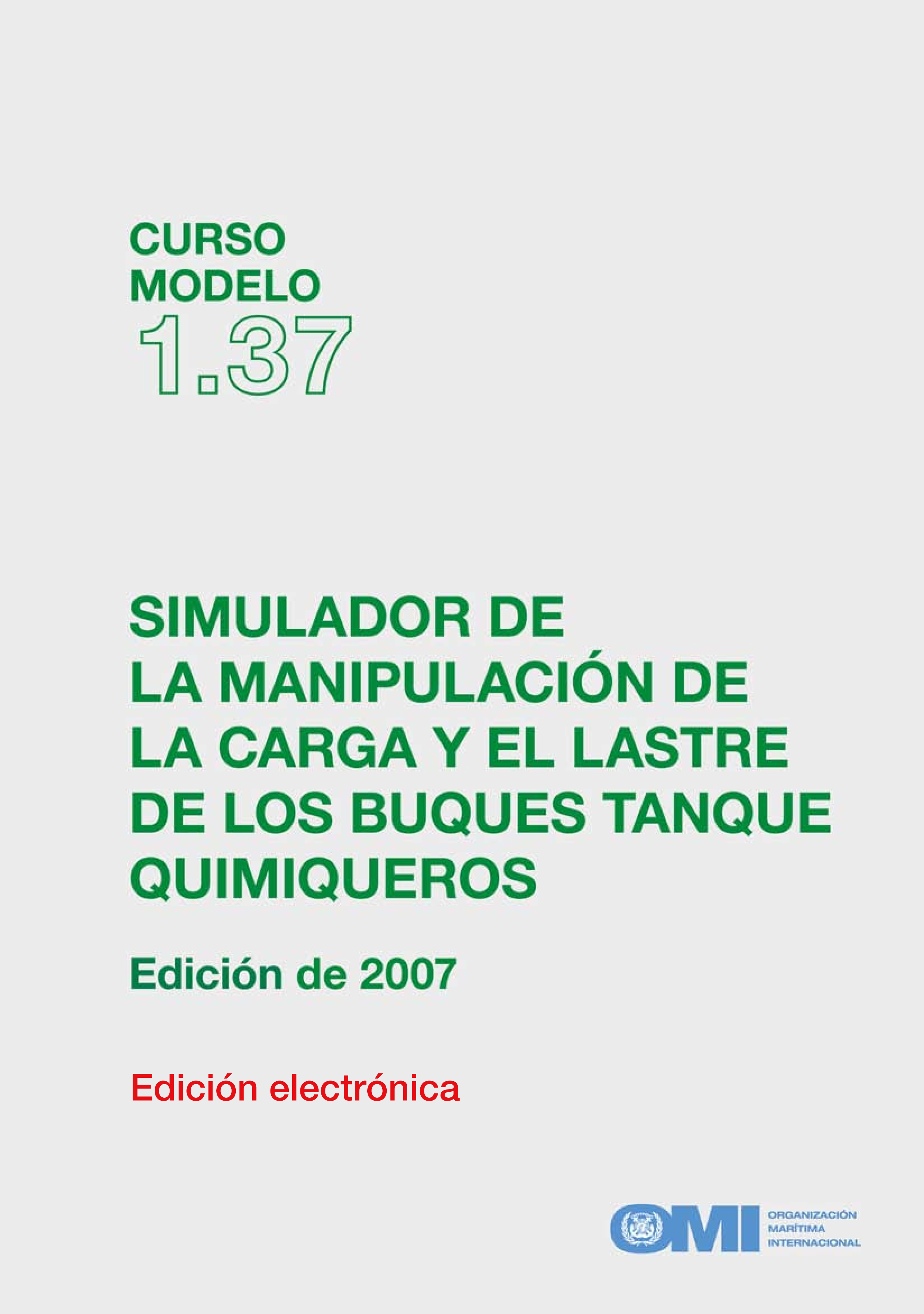
Simulador de la Manipulación de la Carga y el Lastre de los Buques Tanque Quimiqueros
Curso modelo 1.37
The course is essentially a practical one and consists of a series of exercises structured around the operation of the cargo and ballast installation of a chemical tanker and carried out in conjunction with a simulator.
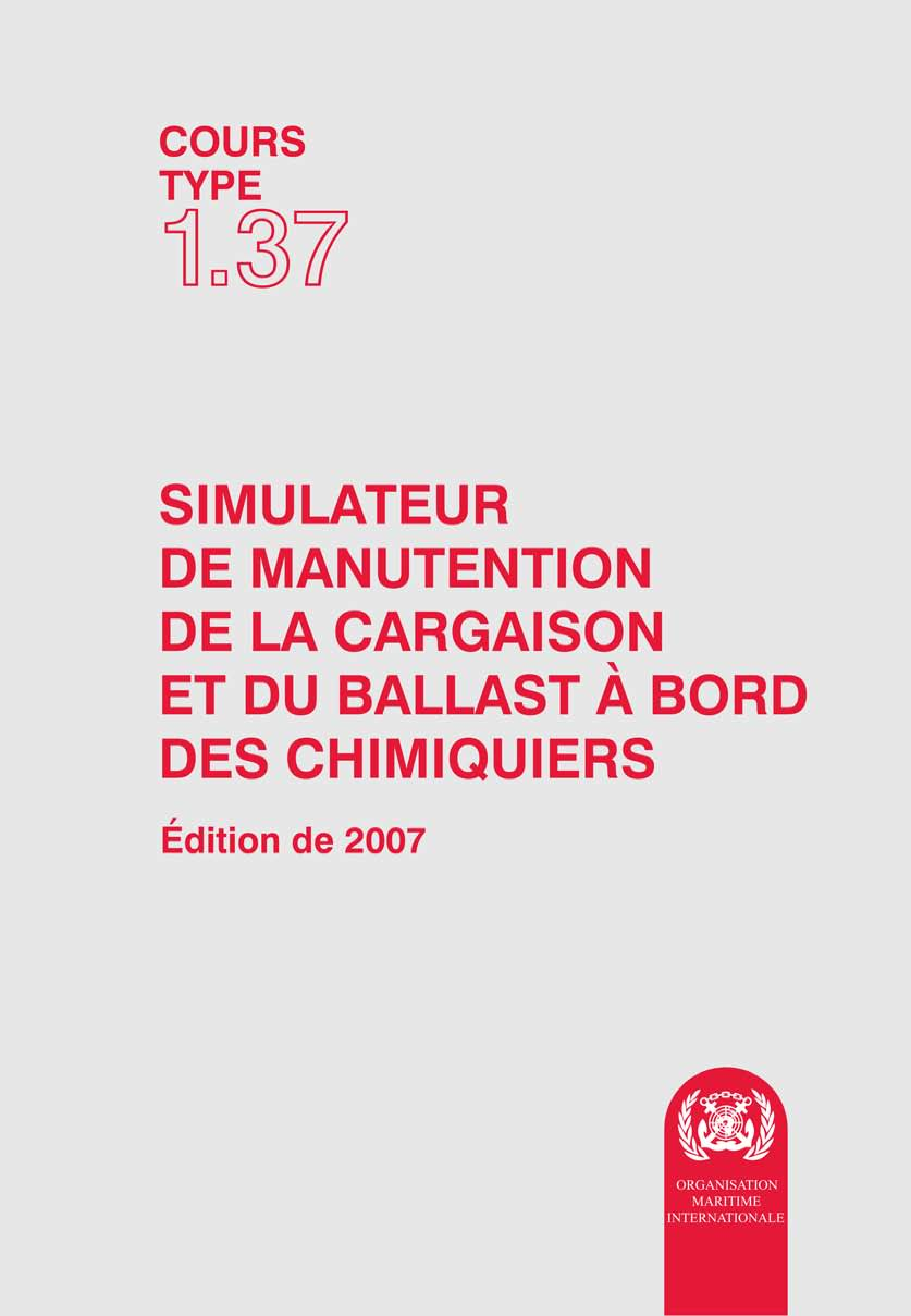
Simulateur de Manutention de la Cargaison et du Ballast à Bord des Chimiquiers
Cours Type 1.37
Le présent cours consiste essentiellement en une série d'exercices structurés autour de l'exploitation de l'installation de cargaison et de ballast d'un chimiquier et effectués sur un simulateur.
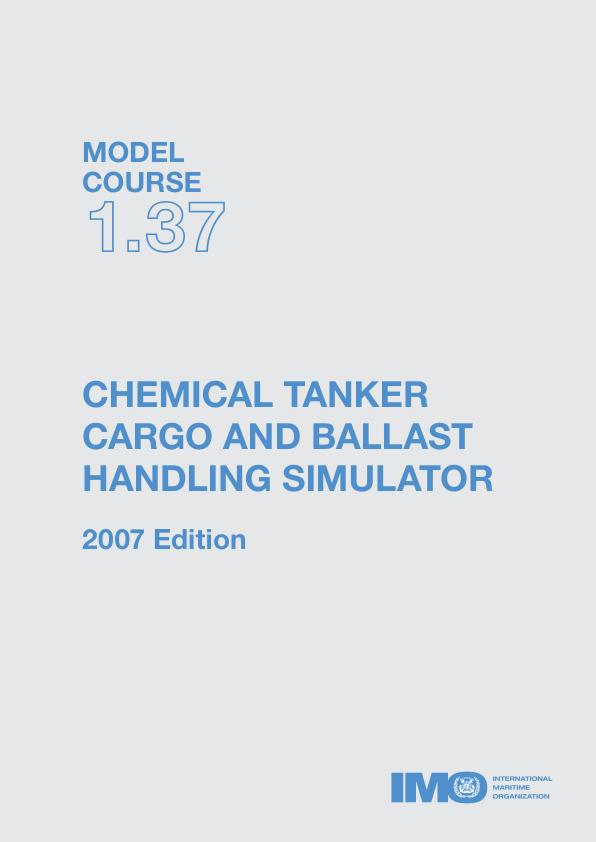
Chemical Tanker Cargo and Ballast Handling Simulator
Model Course 1.37
The course is essentially a practical one and consists of a series of exercises structured around the operation of the cargo and ballast installation of a chemical tanker and carried out in conjunction with a simulator.
